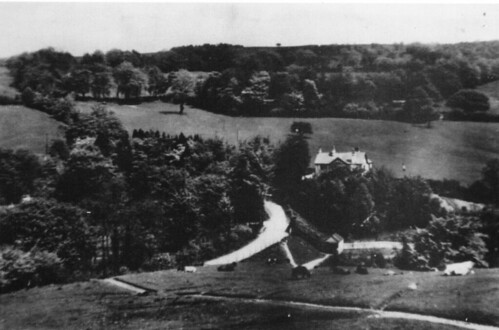 I have been watching a TV series called Phil Spencer, Secret Agent. This is a property programme and each week during the series Phil tries to help a family sell their house. In the programme I saw today he was in Harrogate, where he met Andrew and Jenna whose pleasant semi-detached house in a desirable area was not attracting the interest it should have.
I have been watching a TV series called Phil Spencer, Secret Agent. This is a property programme and each week during the series Phil tries to help a family sell their house. In the programme I saw today he was in Harrogate, where he met Andrew and Jenna whose pleasant semi-detached house in a desirable area was not attracting the interest it should have.So far so good: the premise of the programme is pretty much the same as the long running TV series House Doctor which was first screened in 1998. Like Ann Maurice, Phil tells the vendors bluntly how their property looks from a buyer's perspective, and then they get to work to transform it.
Why?
This process goes well, except that Phil believes the property is over-priced. However, not only do Andrew and Jenna ignore this advice, they go on to sack their estate agent and appoint a PR company to sell the house instead. The promise is that Twitter and Facebook will deliver where conventional marketing failed.
Phil is not convinced and by the end of the programme has only found one potential buyer to view the property - someone who had been identified earlier when the house was with an agent. I would like to know what the end result was: according to the Move With Us blog the social media route didn't do the business and the couple put the house back on the market with an estate agent.
Cutting out the agent is a process known as disintermediation. The principle is that electronic media can fill all the roles traditionally serviced by an agent: an example might be buying airline tickets or motor insurance direct from the service provider. Andrew and Jenna were persuaded that social media could do the job better than the agent, but it turned out not to be the case. Why?
I wondered the same thing last summer when I was about to put my house on the market. I figured out that as I understand online and am considered to be a social media expert, I could find all the prospective buyers I needed, and then use technology to get them hooked. In doing so I would save several thousand pounds in agents fees.
In the end, though, I went through a traditional estate agent. There were a lot of reasons for this: one was that I found that in Britain at least buyers prefer to deal with a third party, rather than negotiate directly with a seller. I also felt that a prospective buyer would have more respect for key details such as price when it had been set by an agent. But most importantly I found that 21st century real estate in the UK is dominated by two online platforms, RightMove and PrimeLocation. Both of these provide a superb range of services to buyers and have transformed the property market. Almost every property on the market in the UK is listed with these companies, but both will only take bookings from registered estate agents.
You can try and use Facebook and Twitter to create a buzz around your home, but if it isn't on RightMove or PrimeLocation it just isn't visible.
My estate agents agreed to use my photographs of the house: I spent a huge amount of time getting the angles, layouts, lighting and colour just right in each of them, and I made 40-50 examples available for their brochure and for uploading to Rightmove. Those that they didn't use I uploaded to Flickr and tried to tag them carefully to improve their visibility. From time to time I linked my Twitter feed to the pictures (I have more than 500 'followers' on the site). Similarly, I would comment about the house and the pictures on FaceBook - but only occasionally as social media users don't like being sold to.
The Flickr photos tried to make the place look nice, and to sell the lifestyle a buyer could enjoy. This helped to back up what the agents and Rightmove were doing, but Flickr, Twitter and Facebook didn't sell the house. The metrics provided by Flickr showed no more than half a dozen hits each week for each picture: our pages on Rightmove were getting hundreds of hits in the same time.
 |
| Wayside House in about 1930: selling the history |
